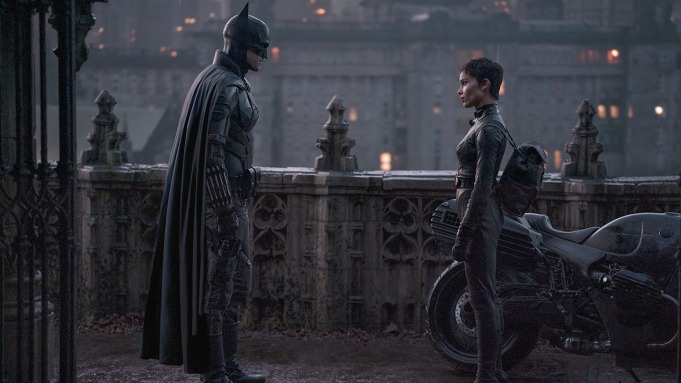
I like Batman; though I haven’t really been invested in the comics since Grant Morrison ended his run in 2014. The rhetoric around Matt Reeves’ The Batman (2022) primarily focuses on getting “back to roots”. Based on the gritty, neo-noir posturing of Reeves’ film could this mean a return to the early days when Bob Kane and Bill Finger depicted the caped crusader as a gun-toting, costumed vigilante out to bust gangsters and mad scientists?
That was in the thirties and forties, almost a hundred years ago now. So why go back when in the fifties Batman moved beyond the dour sensibilities of the great depression and into the nuclear age? Between his creation in the late thirties and through to the sixties Batman changed drastically from a loner to a family man, from a portent of doom to a symbol of hope. The world of Batman has, for the majority of its history, been a splendidly colorful one full of invention, fantasy, kink and well-won friendships. So again, why go back to when that wasn’t the case? In actuality filmmakers like Christopher Nolan and Matt Reeves mean they are going back to Frank Miller’s Batman: Year One for inspiration, not the comics of fifty years earlier. The rhetoric around these Batman movies is as misleading as it is disturbing.
The great creators who have worked on Batman comics over the years (Bill Finger, Grant Morrison, Dennis O’Neil and Neal Adams, Steve Englehart) all understood that Batman is a fantastic character and will therefore thrive under highly stylized conditions. This was the unifying factor of the Batman movie franchise helmed by Tim Burton and later Joel Schumacher. Each of these four movies pushed the character into new aesthetic iterations, exploring the potential of Batman as an idea. Burton and Schumacher never shied away from camp, from color, from plasticity nor from those eras of Batman history that so many fans find embarrassing today.
The Batman (2022), like Nolan’s Dark Knight trilogy, is a dimly lit, grimy affair. The meandering plot, as predictably indebted to Batman: The Long Halloween as it is, manages to find accommodations within the nearly three hour running time. Nolan’s sprawling narratives were highly condensed and without any nuance whereas Reeves’ The Batman can take its time and make sense of itself. The stylistic framework that Reeves employs to support his prolonged mystery is derived from the films of David Fincher.
However these conditions do not dispel Reeves’ admiration for the Nolan model. The Batman may be longer, more sensible and even more comprehensible than Nolan’s films but it is still as ugly, pretentious and uncomplicated. With nearly a hundred years of Batman at his disposal how could Reeves make a film so un-incredible?
